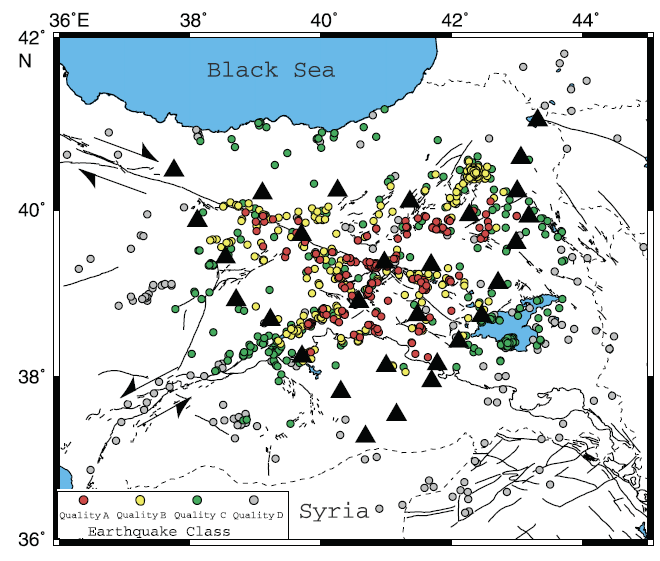
A 29-station temporary broadband PASSCAL network was operated from late October 1999 to August 2001 in eastern Turkey in order to decipher the geodynamics of one of the youngest continent-continent collision zones in the world. This paper focuses on the hypocentral distribution of local earthquakes located during the operation of the network and provides new insights into the active faulting in the Anatolian plateau. A total of 1165 earthquakes were located and classified into four different categories based on the reliability of the locations as established by the data coverage. The accuracy of the locations ranked in the best two categories is estimated to be less than approximately 5 km. The results show that seismic activity in Eastern Turkey is higher than previously documented and there were no subcrustal earthquakes beneath the Arabian- Eurasian collision zone or beneath the Anatolian plateau during our deployment. This result suggests no or very little underthrusting of the Arabian plate beneath Eurasia. Our results also suggest that the North Anatolian Fault zone extends farther toward the southeast, well beyond the Karliova triple junction, and that a number of unmapped active, seismogenic faults exist in the region. We also observed a possible difference in the seismogenic thickness of the East Anatolian fault zone (EAFZ) and the North Anatolian fault zone (NAFZ).
Click here to view a PDF of the post-print
An edited version of this paper was published by AGU. © 2003 American Geophysical Union.
Figure 2. Map showing earthquake locations in Eastern Turkey based on the ETSE data for the period October 1999–August 2001. All hypocenter locations were classified into four different categories based on the reliability of the locations which are shown by solid dots in red, yellow green and gray. The solid triangles are seismic stations.
